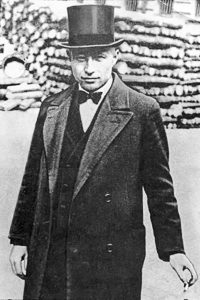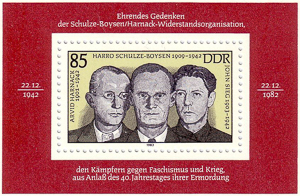We normally associate the guillotine with the French Revolution and the period known as “The Terror.” There are different estimates of the total number of victims claimed by “The National Razor” during the French Revolution with anywhere from four thousand up to ten-fold or, forty thousand lives lost to Dr. Joseph Guillotin’s machine. Well, it is likely that Hitler and the Nazis executed more than sixteen thousand using twenty fallbeil or, guillotines scattered around Germany in various prisons. The victims were primarily German citizens—young and old—men, women, and children—some whose only crimes were distributing anti-Nazi leaflets.

Did You Know?
“What if?” What if Abraham Lincoln was never assassinated? Would Jim Crow laws ever have existed? What if Martin Luther King, Jr. had not been assassinated? Would he have been our first African-American president? What if Lenin hadn’t died in 1924 and was able to prevent Stalin from taking over? Could the Cold War (and the Great Purge with its murder of 1.2 million Russian citizens) have been prevented? “What if?” scenarios can be applied to just about any historical situation. In this case, it’s about the Nazis coming to power. The German Communist Party (KDP) was a legitimate political party often collaborating with the German socialist party known as the Social Democratic Party (SDP). The KDP was independent from Moscow’s influence but when Stalin was able to control the Communist International (an organization which enveloped the world’s Communist parties), he ordered all local Communist parties to be subordinate to the Communist International and Moscow. Once that was accomplished, Stalin ordered all Communist parties to regard socialist parties as their enemy and to end any collaboration. By 1928, the KDP and the SDP accounted for more than forty percent of the German parliamentary vote. They often formed a working coalition. The National Socialist German Workers Party or, commonly known as the Nazi Party, controlled less than three percent in the late 1920s. After Stalin’s directive, the two parties (KDP and SDP) could not vote together and one of the results was the increase in representation of the Nazi party culminating five years later with Hitler coming to power. So, what if Stalin had not issued his resolution stating that socialism was “more dangerous than the avowed adherents of predatory imperialism.” Would the KDP and SDP working together have been able to thwart Hitler’s plans and prevent the twelve years of the thousand year Third Reich?
Hitler Comes To Power
The stage was set. After losing World War I and forced to make what even some of the victors considered to be unreasonable reparation payments, Germany suffered through hyperinflation. The Weimar Republic was weak and by the time the consequences of the American stock market crash in October 1929 reached Germany, millions were out of work and banks collapsed. Taking advantage of the lack of cohesive leadership and the general suffering of the voters, the National Socialist German Worker’s Party or, the Nazi Party began to espouse a far right-wing nationalistic position. The Nazis’ platform included a national and cultural renewal. Hitler promised a strong central government, a better economy with jobs, increased Lebensraum (“living space”), a rejection of the terms of the Versailles Treaty, and the collapse of the unpopular Weimar Republic. They also made no attempt to hide their plans for the treatment of Jews and people of “inferior” races (i.e., anyone other than those of the Germanic or Aryan race). In other words, the Nazis were about to serve up a policy of racial cleansing. Read More The Nazi Guillotine

